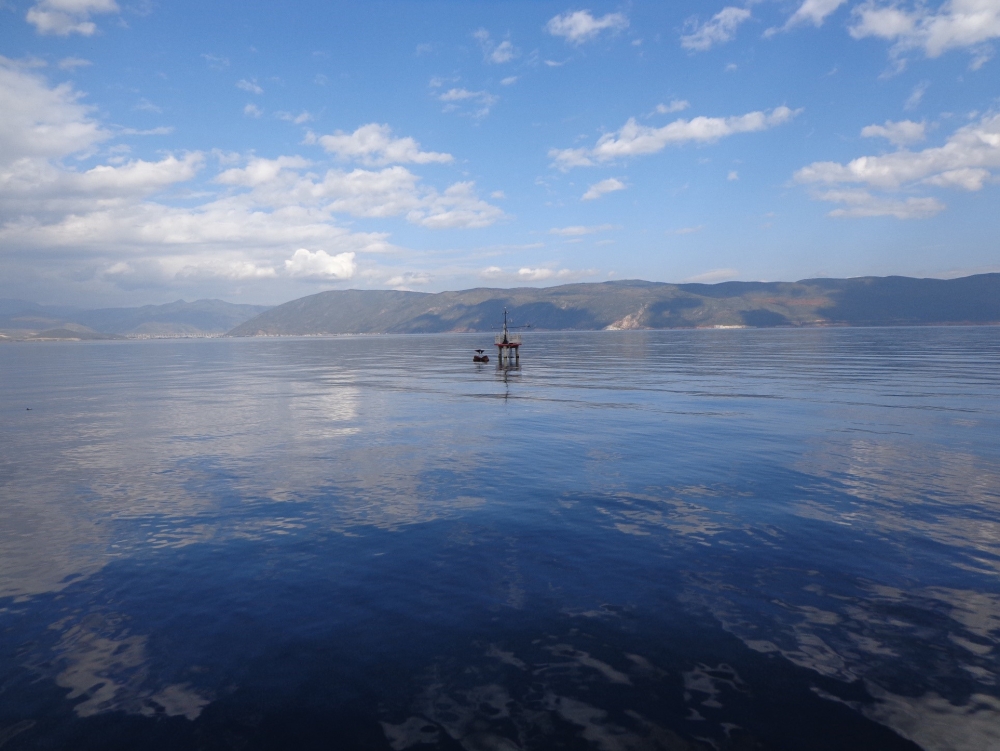Lakes Affect Regional Energy, Heat, and carbon exchange processes
Date:2021-04-01
Lakes are an important part of the earth-atmosphere system. They maintain ecological balance and have special functions that regulate climate along with the nearby landscape. More than one third of lakes in China are distributed in the southern plateau region. The topography around the plateau lakes is complex and diverse, which leads to a unique local air circulation. This meteorological phenomenon results from the interaction between lake-land breeze and mountain-valley breeze circulations. Local energy sources rely on this mechanism, which is also responsible for material circulation. Because of this, scientists want to better understand how this process affects the carbon and water cycles as well as regional heat exchange.
"Due to the difficulty and high cost of continuous observation in lakes, the understanding of lake-air interactions is still very limited." said Prof. LIU Huizhi, a researcher at the Institute of Atmospheric Physics, Chinese Academy of Sciences.
Since 2011, LIU and his research group from the State Key Laboratory of Atmospheric Boundary Layer Physics and Atmospheric Chemistry has maintained an observation site at Erhai Lake within the Dali Basin in southwestern China. Along with basic meteorological data, they were particularly interested in measuring eddy covariance at the lake surface.

The eddy covariance observation site at the Erhai Lake in the Dali Basin. (Image by XU Lujun)
"The mechanism of the impact of lakes on regional hydrothermal cycle and carbon exchange needs to be further analyzed." said LIU.
Based on data from the observation site, the team was able to recognize specific characteristics of local air circulations and their impacts on the water, heat, and carbon cycles in and around Erhai Lake. They found that the heat and carbon exchange processes are inversely related. When one mechanism increases its influence, the other decreases.
"The lake breeze promotes latent heat flux exchange and reduces sensible heat flux and carbon dioxide flux exchange during daytime." LIU says. "At night, mountain breeze increases the exchange of carbon dioxide flux and decreases the exchange of sensible and latent heat flux. The southeast wind from lake surface at night has the opposite effects."
Overall, LIU and his team's data suggest that lakes promote heat (energy) and water exchange, but they suppress carbon dioxide exchange in mountainous lake area.
The findings are published in Advances in Atmospheric Sciences. "Future field experiments in the horizontal and vertical direction are needed to further investigate energy and carbon dioxide exchange at different temporal and spatial scales." LIU adds.
Citation: Xu, L. J., H. Z. Liu, Q. Du, Y. Liu, J. H. Sun, A. L. Xu, and X. N. Meng, 2021: Characteristics of lake breezes and their impacts on energy and carbon fluxes in mountainous areas. Adv. Atmos. Sci., https://doi.org/10.1007/s00376-020-0298-x.
Media contact: Ms. LIN Zheng, jennylin@mail.iap.ac.cn
